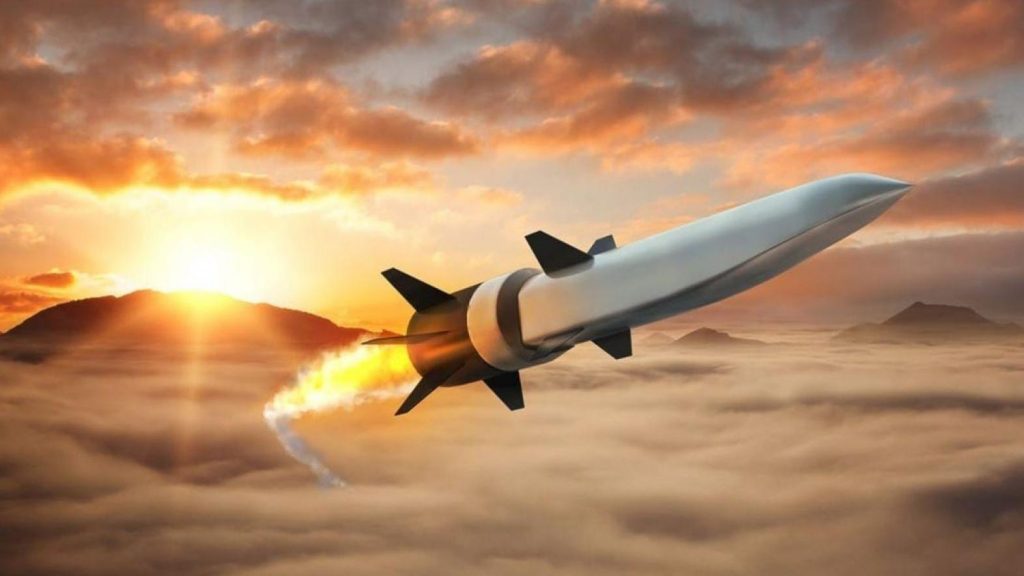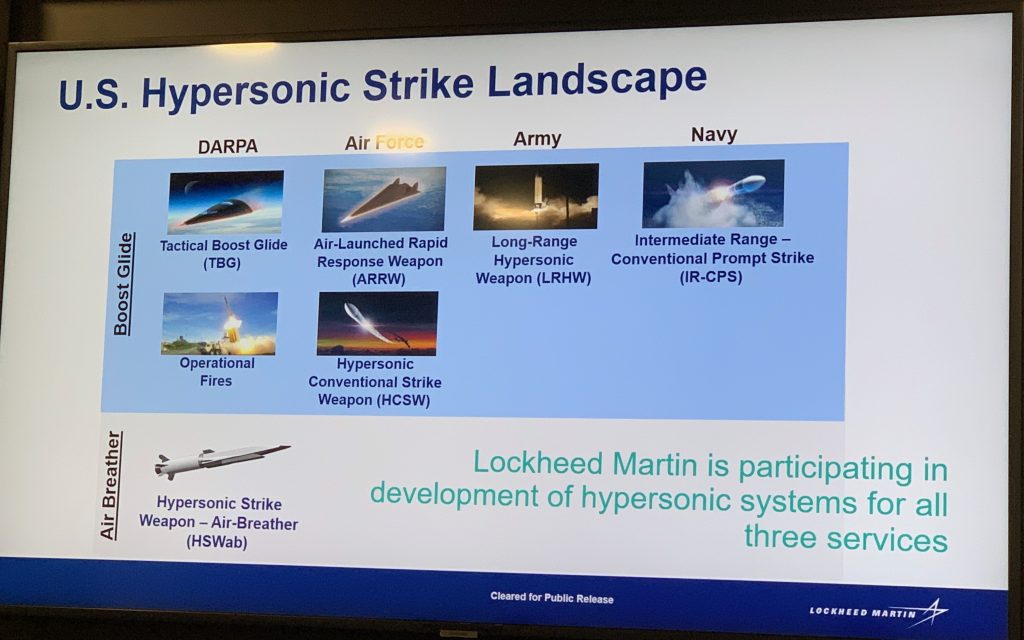Written by J.Hawk exclusively for SouthFront
Even two years ago, hypersonic weapons were barely an item of discussion among the US national security establishment. Today these weapons are all the rage. What accounts for that sudden emergence of US interest in this category of weapons, which has spurred research and development on several different weapon systems that are to enter service at some point in the upcoming decade? And what are the implications of their eventual likely entry into service?
Battleground Syria
The triggering reason is most likely the failure of US, French, and British stand-off weapons used against Syria, specifically against targets covered by modern air defenses. Russia’s and Syria’s surface-to-air gun and missile systems racked up an impressive tally of Tomahawk cruise missiles that still represent the most important component of the US stand-off weapon arsenal. Even the supposedly stealthy cruise missiles like France’s SCALP-EG, Great Britain’s Storm Shadow, and US JASSM-ER proved to have low survivability against modern defenses. Israel’s equivalent munitions were not exception to that rule, as they too had to rely on saturation attacks or, more likely, striking targets that were outside the integrated air defense bubble. Compounding the problem was the absence of sub-strategic ballistic missiles, with the exception of short-ranged ATACMS which, while a formidable weapon, is too slow to evade interception by tactical anti-ballistic systems.
Nor were “hard kill” defenses the only weapons that proved effective against the array of NATO’s air- and sea-launched cruise missiles. Though hard data is difficult to come by, there is evidence suggesting “soft kill” electronic warfare measures were quite effective at countering a wide variety of stand-off munitions as well.
Collectively, these experiences have shaken US and NATO confidence in their chosen technological approach that emphasized stealth for every aerial vehicle in their arsenals, including manned and unmanned platforms as well as missiles. Yet even though stealthy cruise missiles such as the JASSM and its anti-ship version, the LRASM, might be successful at avoiding targeting by long-range radar-guided weapons, the fact they are jet-powered means they are detectable by infrared imaging sensors at closer ranges. The remarkable information campaign waged by NATO countries against the Pantsir-S short-range air defense system is a reflection of its effectiveness as a missile, bomb, and drone-killer.
The Need for Speed
Whereas the US military establishment embraced stealth as a “silver bullet” technological solution to all manner of tactical and even strategic problems, Russia’s approach was more measured. While the studies that have led to this conclusion probably will remain classified for a long period of time, the Russian military came to the unreasonable conclusion that since avoiding detection cannot be guaranteed, the best way to deal with missile defenses is to decrease exposure time by making the missiles ever-faster. This trend was already evident during the Cold War, when NATO settled for subsonic anti-ship missiles such as the Exocet, Harpoon, Penguin, Otomat, and ultimately the Tomahawk which had both anti-ship and land-attack applications, which relied on stealth of sorts in the form of flying at extremely low altitudes. USSR, on the other hand, already by the late 1960s was making a major investment in highly supersonic air-, surface- and submarine-launched missiles. By 1980s, Soviet weapons were increasingly employing air-breathing ramjet propulsion which pushed their speeds ever-closer to the hypersonic realm. NATO’s use of ramjet propulsion during that time was limited to surface-to-air missiles such as the British Sea Dart and US Talos, while its cruise missiles were almost exclusively jet-powered.
Russia’s evolutionary development of these technologies has led both to systems already in service, such as the Oniks and Kalibr cruise missiles (with an anti-ship variant of the latter employing a highly supersonic terminal stage), to be soon joined by the Tsirkon, a genuinely hypersonic cruise missile, the Avangard ICBM maneuvering re-entry vehicle, the Kinzhal aeroballistic missile derived from the Iskander INF-threshold 500km range ballistic missile.
Prompt Global Strike
US interest in conventional hypervelocity strike weapons not exactly new. The George W. Bush administration initiated the Prompt Global Strike program which made its first appearance in the 2001 Nuclear Posture Review, shortly before the US withdrawal from the ABM Treaty. Nevertheless, US post-9/11 wars have shifted attention and budgets away from strategic weapons and toward counterinsurgency, therefore while the interest in these weapons was never abandoned, it was nowhere near the top of US defense priorities. Not even the rapid deterioration of Russia-NATO relations in 2014 and later years led to visibly greater interest in these weapons. Trump Administration’s two rounds of cruise missile strikes against Syria, however, appear to have had that effect. As a result, every service of the US military is interested in the development of at least one weapon system that would provide with hypervelocity strike capabilities. With the exception of Avangard, every Russian system mentioned has a US development under some stage of development.
Precision Strike Missile (PrSM)
The PrSM is quite literally the US equivalent of the Iskander, possessed of similar range and capabilities. There are two versions of the weapon being developed, one by Lockheed-Martin which conducted the first test launch conducted in 2019, and another by Raytheon which appears to be behind schedule. While the weapon is intended to be used from the same HIMARS launchers that ATACMS uses, the missile itself has considerably greater range of just under 500km, though it is widely assumed it is going to be extended to 700km. The original official 500km range requirement was placed when the INF Treaty was still in force, but since that treaty’s demise was already being planned by the White House, it is rather likely the two competitors were informed that actual desired range was greater than the specified one.
Long-Range Hypersonic Weapon (LRHW)
The LRHW picks up where the PrSM leaves of, and moreover is one of the missile designs using the Common Hypersonic Glide Body (C-HGB) developed by Sandia National Laborary. C-HGB is an Avangard-like though smaller maneuvering hypersonic vehicle that has been tested at speeds of up to Mach 8 and ranges in excess of 6,000km as part of the Army Hypersonic Weapon program that has since been folded into this and other projects. While the LRHW range will depend on the kinematics of the carrier. However, since START I treaty defines an ICBM as a missile with a range exceeding 5,500km, if LRHW has performance comparable to the AHW, it would be a de-facto road-mobile ICBM. While it is planned as a delivery vehicle for conventional payloads, nothing prevents it from carrying nuclear warheads. LRHW and other long-range surface-launched hypersonic weapons may be the reason United States has shown no interest in extending New START treaty which uses the same definitions and which is set to expire in 2021. The US Army hopes to have the first LRHW battery in service in 2023, though that date is likely to slip, if only because of the COVID-19 pandemic.
Nice view of the Army’s selected TEL for the Long Range Hypersonic Weapon. You can see two cells per TEL. And Lockheed Martin said today the booster is based on a two-stage, 34-in. stack. The glide body is derived from the biconic SWERVE. #AUSA2019 #AUSA pic.twitter.com/pkI8RKI2xr
— Steve Trimble (@TheDEWLine) October 14, 2019
Intermediate Range Conventional Prompt Global Strike (IRCPS)
IRCPS is the US Navy’s equivalent of the LRHW in the sense that it uses C-HGB. However, unlike the missiles mentioned above, it does not appear to have a custom-designed launch vehicle but will instead use repurposed Trident SLBMs, most likely the intermediate-range Trident I. One point which speaks in favor of Trident I is that its smaller size makes it compatible with the Virginia Block III attack submarines “Virginia Payload Tubes” which normally carry Tomahawk SLCM packs but which are large enough to accept a single Trident I-based IRCPS. So here too we see deliberate blurring of the line separating strategic and non-strategic weapons. Since the C-HGB can be used as a nuclear delivery vehicle, it would transform US Navy’s future attack submarines with suitable launch tubes into ballistic missile submarines.
Air-Launched Rapid Response Weapon (ARRW)
Unlike LRHW and IR CPGS, the ARRW does not use the C-HGB. That weapon was supposed to be the Hypersonic Conventional Strike Weapon (HCSW) which is still advertised on the Lockheed-Martin web site, alongside ARRW, IRCPS, and LRHW, but which was rejected in favor of ARRW, a smaller vehicle with a different, smaller glide body. USAF chose ARRW over HCSW because of the smaller size that would enable B-52 and B-1 to carry larger numbers of these missiles, and even permit F-15 fighters to act as carriers.
Conventional or Nuclear Prompt Strike?
Since all of these weapons have ranges bordering or possibly even exceeding the strategic armaments’ range threshold of 5,500km and moreover could have nuclear variants, they should properly be termed strategic weapons. With the exception of the PrSM, their capabilities go well beyond the need to launch battlefield strikes or to target key rear-area facilities. These missiles’ capabilities in some respects even exceed those of Cold War-era IRBMs like Pershing II. Indeed, even when carrying conventional payloads, their high velocity makes them into very effective “bunker-busters” capable of threatening ICBM launch silos and underground command centers. This makes them ideal first-strike weapons, used against leadership and weapons sites, with the target country’s degraded nuclear response being restrained or limited by US anti-ballistic missile defenses which are being developed in parallel with hypersonic strike capabilities, and the still-untouched US nuclear arsenal.








